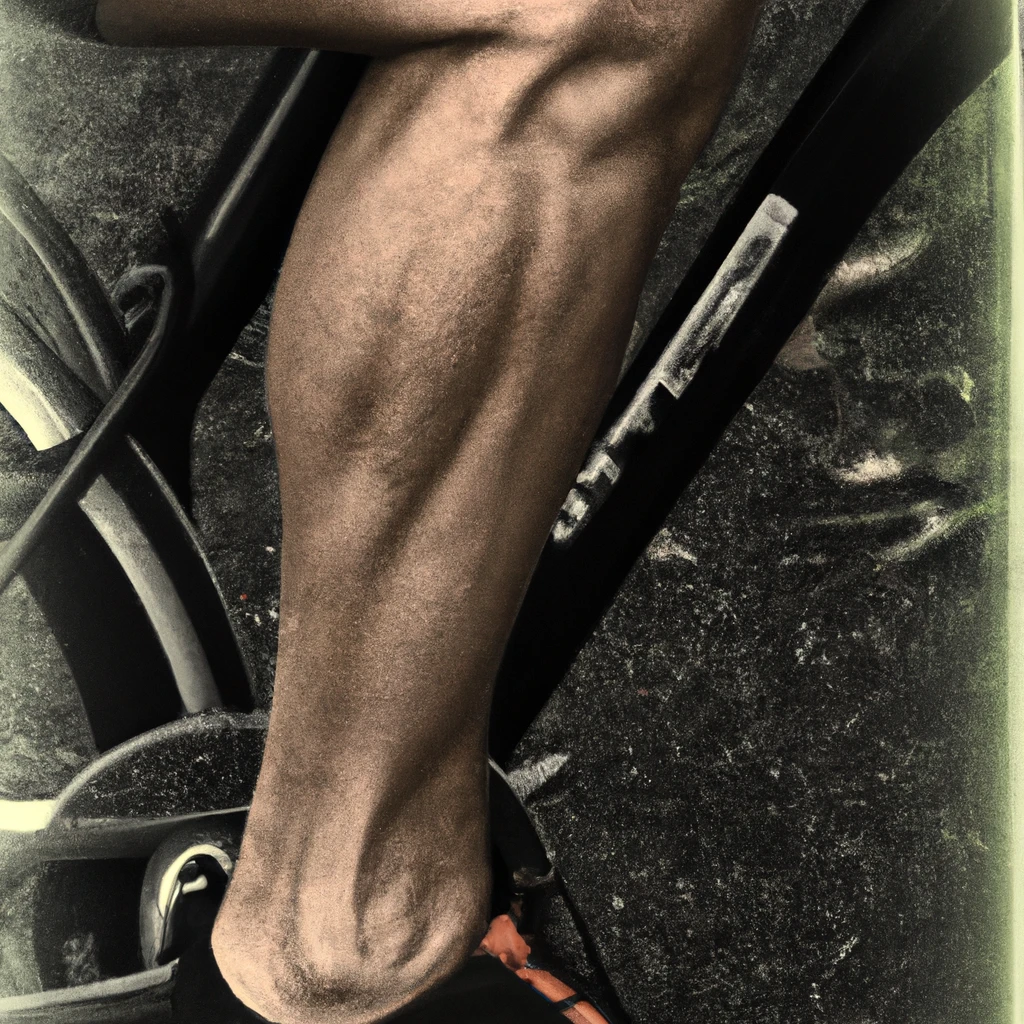Over the years, have I found myself drawn to cycling? Indeed, I have. Whether it’s a leisurely cycle through the park or an intensive indoor session, cycling has become my go-to form of exercise. Why, you might ask? (Or perhaps you’ve guessed already.) The answer is simple: substantially, it works a plethora of muscles in the body, contributing to comprehensive physical well-being.
Cycling, whether on a stationary bike or outdoors, is a popular form of exercise that offers a range of health benefits. But which muscles are really getting a workout when you pedal away?
Substantially, over the years, I’ve discovered that cycling works out a comprehensive range of muscles. It’s not just your legs that benefit! (Although they do bear the lion’s share of the work.)
- Quadriceps: These powerful muscles at the front of your thighs work overtime when you’re pushing down on the pedals.
- Hamstrings and Calves: When you pull up on the pedals? Your hamstrings and calves are doing the heavy lifting.
- Glutes: That feeling in your buttocks after a long ride? That’s your glutes, maximised, being strengthened.
- Abdominals and Back muscles: These help stabilise your body on the bike, supporting your spine, especially when you’re riding out of the saddle.
- Arm and shoulder muscles: These areas gain strength and endurance from the continuous steering and balancing action required when cycling.
I believe without a doubt that this broad muscular exercise makes cycling a true full-body workout, leading to an overall enhancement of health and fitness. So, next time you saddle up, remember the tremendous contribution cycling makes to exercising various muscles in your body, and pedal away with that thought!
Quadriceps (Front Thighs)
As someone who has extensively experienced the joys and benefits of cycling, I find it quite fascinating to break down which muscle groups cycling primarily targets. It’s significant to note that cycling isn’t just an engaging hobby or an environment-friendly mode of transport, it’s also a powerful workout that engages a certain muscle group more than others.
The act of pushing down on the pedals requires a lot of effort from our body. Have you ever wondered exactly which muscle group bears the brunt of this effort?
Truth be told, the primary muscle group worked during cycling is the quadriceps. This group of muscles located in the front of your thighs is principally engaged when we extend our knee to push down on the pedals. It’s a dynamic process that gets these large, robust muscles pumping.
However, we must not forget that cycling, as comprehensive as it is, is not isolated to the work of the quadriceps alone. While they are the primary muscles called into action, they’re certainly not the sole players in this activity we all love so much.
There’s always a broader system at work—a collective effort of many muscular subsystems. The overarching benefits on our entire body are what make cycling such an outstanding form of physical activity. Change your perspective—you’re not just cycling. You’re setting in motion a beautifully coordinated process of muscular engagement and physical transformation.
So, when we delve deeper into “What muscles does cycling work?”, surely, our focus will begin with the powerful quad muscles. However, let’s not forget to appreciate the symphony of muscular effort behind every pedal stroke. This discussion on muscles and cycling is an orchestra, and the quadriceps are our credit-worthy conductors.
Hamstrings (Back of the Thighs)
Oh, the hamstrings! Cycling intensely engages these set of muscles located at the back of your thighs. Have you ever wondered what powers you up steep hills or provides stability when you’re pushing against the pedals? It’s primarily your hamstrings doing a lion’s share of the works. Let’s delve a bit deeper into this, shall we?
First off, your hamstrings are comprised of three muscles, namely, the semitendinosus, semimembranosus, and biceps femoris. As you pedal, these muscles work in a cyclical pattern. When one leg pushes down (the power phase), the corresponding hamstring contracts, aiding in the force exerted. Simultaneously, the hamstring of the other leg lengthens as it moves up (recovery phase), preparing for the next power phase. An engaging, rhythmic dance if you think about it.
Mountain Climbing and Hamstrings
When it comes to uphill cycling or mountain biking, that’s when your hamstrings really step up to the plate. With each upward push, these muscles work tremendously to overcome the forces of gravity, effectively propelling you forward and upward. From my personal experience, riding uphill can truly be a test of will – the burn in your hamstrings is a testament to that. But trust me, it’s utterly rewarding when you make it to the top.
It has been scientifically proven that cyclists engage their hamstrings more frequently than runners. This means cycling is an excellent cross-training exercise for runners wanting to strengthen these muscles and reduce injury risk. Paradoxically, this also demonstrates why it’s fundamental for cyclists to adequately stretch their hamstrings after riding. Extra care should be taken as, although they’re some of the strongest muscles in your body, they’re also some of the most susceptible to injury.
The Hamstrings and Cycling Performance
The efficiency of your hamstrings is directly proportional to your cycling performance. Strong hamstrings can offer increased power output, improving both speed and endurance. They also help maintain optimal cycling posture by stabilizing the knee joint, which is of paramount importance in ending your cycle ride without unnecessary aches and pains.
Whether you’re a professional cyclist or a leisurely bicyclist like myself, it is essential to pay heed to your hamstrings. Regularly stretching and strengthening these muscles can efficiently enhance your overall cycling experience. After all, our hamstrings deserve all the care and attention as they’re literally carrying us uphill!
Calf Muscles
Your calf muscles also receive an extensive workout when you’re cycling. This consists mainly of the gastrocnemius and the soleus muscles. Every time you push the pedal down, your calf muscles spring into action. This might seem like it’s not a lot of work, but imagine how many times you pedal during a cycling session? I bet those calf muscles are burning just thinking about it!
Here’s something I’ve learnt from my own experience: The gastrocnemius (the large, bulky muscle at the back of the lower leg) is primarily involved in the downward phase of the pedal stroke, where your foot pushes the pedal down. The muscle’s responsibility is vast, playing a key role in maintaining the angle of your foot and providing a powerful downstroke.
The soleus muscle, located just underneath the gastrocnemius, has a different role. It’s used throughout the entire pedalling process, helping to maintain the angle of your foot and providing stability. It might not get as much spotlight as the gastrocnemius, but rest assured, it’s equally important!
The Importance of Calf Muscles in Cycling?
As an authority on this topic, I can tell you that the calf muscles play a significant role in maintaining balance and stability, especially during hard rides and uphill cycling. Their continuous contraction and relaxation ensure that your feet stay firmly on the pedals, providing the necessary support and power. The strength of your calves can be the difference between maintaining a steady climb uphill and feeling your legs give out.
Are you wondering how to improve your calf strength for better cycling performance? Engaging in specific exercises that target these muscles, such as calf raises or heel drops, can improve their strength and endurance. Ultimately, better calf muscles can contribute to a more powerful, efficient pedal stroke, enhancing your overall cycling performance. Now isn’t that a goal worth working towards?
Gluteal Muscles (Buttocks)
Naturally, you’d expect your buttocks to get a good workout from cycling, wouldn’t you? Well, you’re not mistaken. Though often relegated to being mere ‘passenger’ muscles during a ride, the gluteal muscles are powerhouse contributors to your cycling performance, playing an integral part in propelling you forward.
Comprising of the Gluteus Maximus, Gluteus Medius, and Gluteus Minimus, the gluteal muscles represent the broadest and strongest muscles of your body. Let’s explore how these muscles engage as you pedal.
The Gluteus Maximus (the largest of the three) primarily swings into action at the start of your pedal stroke. Picture the initial push-down phase as you start to pedal; that’s where this muscle comes in. By offering a robust push, it establishes a solid foundation for the initial power transfer to the pedals.
The Gluteus Medius and Gluteus Minimus, on the other hand, are more about stability and control. Ever had to suddenly swerve to avoid a pothole? These stabilising muscles are the unsung heroes working behind the scenes, keeping your pelvis stable as you maintain balance and control.
Here’s a bit of personal insight from my own experience – there seems to be a distinct correlation between glute strength and cycling performance, especially over long distances. Think about it. When the glutes are robust and well-conditioned, they relieve some burden off your quadriceps and hamstrings, reducing muscle fatigue and allowing you to cycle for longer periods.
- Pro Tip: If you want to maximise the engagement of these muscles, try standing up on the pedals periodically. It’s a technique I frequently use, especially when riding uphill. This change in position increases the activation of the gluteal muscles, providing an extra power boost.
Core Muscles (Abdominals and Lower Back)
Now, we come to the powerhouse of the body – the core muscles. These include the abdominals and the lower back, and are some of the most critical muscles that work during cycling. There’s a common misconception that only lower body muscles are engaged when cycling. However, that couldn’t be further from the truth.
Your core muscles are what keep you stable on the bike and help you control your movement, particularly when you’re riding out of the saddle or making sharp turns. Have you ever noticed that intense burning sensation in your lower abdominals when you up the intensity on your cycling routine? That’s your core muscles hard at work!
The rectus abdominis, otherwise known as the ‘six-pack’ muscle, is the most well-known of the abdominal muscles and certainly has its role to play. However, when discussing cycling, it’s essential not to overlook the other muscles in our core — the internal and external obliques, the transversus abdominis, and the lower back muscles. These muscles all work in unison when we ride.
The internal and external obliques, located on either side of the rectus abdominis, are particularly active during cycling. Their primary role is in the rotation and lateral flexion of the spine, making them highly involved when you’re steering the bike or leaning through a turn. Furthermore, they also play a pivotal role in maintaining balance and stability on the bike.
While less obvious than the abdominals, the muscles in our lower back are equally vital – a key gear in the complex machine that is our body when cycling. The erector spinae, a group of muscles and tendons running along the spine, work to help us maintain an upright posture on the cycle. And let’s not forget the multifidus, a series of small muscles in the lower back, which assist with spinal stability.
In my own experience as an avid cyclist, I cannot stress enough the importance of a strong core. Maintaining good form on the bike reliant is massively on core strength, as is the power transfer from your body to the bike. Conditioning these muscles off the bike through exercises such as planks, crunches, and lower back extensions can do wonders for your cycling performance.
Well, after this comprehensive exploration of the core muscles in cycling, perhaps your six-pack dreams may seem a little more attainable, don’t you think? More than just a testament of strength, it’s evidence of the important work these core muscles do on every cycle ride.
Upper Body Muscles (Arms and Shoulders)
As previously explained, although cycling is primarily a lower body workout, it doesn’t mean that the upper body muscles are left out of action. In my experience, and supported by many cycling experts, the upper body, especially the arms and shoulders, also get their share of the workout.
To maintain balance and control over the bike, especially on uneven terrains, the muscles in your arms (primarily biceps, triceps, and deltoids), shoulders, and upper back need to brace themselves. It is subtle, almost unnoticed, yet vital.
Do you remember gripping the handlebars tightly during a steep descent or when navigating a tricky curve? When you think back, you will realise that this action engages your arm muscles (specifically your biceps) to a considerable extent.
Furthermore, maintaining the proper cycling posture for prolonged periods—I’ll admit, it can get a little tough—activates your triceps on the back of the upper arm. Engaging these muscles helps to keep your body stable and ensures that your movements on the bike are precise and swift.
Now, let’s shift our focus to our shoulders, shall we?
Just as the biceps and triceps are engaged, so too are the deltoid muscles in your shoulders. Especially during long rides, our deltoids bear the load of supporting the upper body in combination with our arms. This constant engagement helps to strengthen them, promoting better upper body strength and stability.
So even though cycling isn’t the most common exercise people think of for targeting the upper body, it doesn’t mean your arm and shoulder muscles aren’t reaping the benefits.
And it’s quite versatile! Whether it’s casual cycling, long-distance, or competitive cycling, the level of engagement and impact on these muscles can vary, catering to diverse fitness levels and goals. Remember, the more aggressive your ride (think about those frenetic sprints or enduring uphill battles), the more your upper-body muscles are challenged.
To summarise, although the impact may be less pronounced compared to the legs and core, cycling significantly contributes to upper body strength and stamina. It’s the perfect proof that cycling truly is a holistic exercise that engages your entire body.
Conclusion
In conclusion, cycling is indeed a full-body workout that engages an extensive network of muscles, transforming them from mere passengers to the main driving force behind the pedal power. From the pulsating quadriceps and hardworking hamstrings to the pulsating calves, steadfast glutes, sturdy core, and even the surprisingly involved upper body muscles – each play a distinctive part in the overall cycling movement.
Remember, it’s not just about the large muscle groups either; the smaller ‘supporting cast’ muscles such as those in your hands, forearms, shoulders, and lower back are also bustling about, ensuring stable control and balance as you manoeuvre your bike from start to finish.
So next time you suit up, clip in, and set out on an exhilarating bike ride, bear in mind just how intricately your body is working in unison. Everything from the soles of your feet to the grip of your hands is playing a role in this elegant performance of power, endurance, and balance that we call cycling.
Therefore, if you’re on a quest for a comprehensive exercise that not only elevates your cardiovascular health but also works on several significant muscle groups simultaneously, look no farther than the humble bicycle. Embarking on cycling as a regular part of your wellness regime assures not just a healthier body, but also a happier mind.
The beautiful truth is that you’re not just cycling – you’re orchestrating a symphony of bodily functions.


